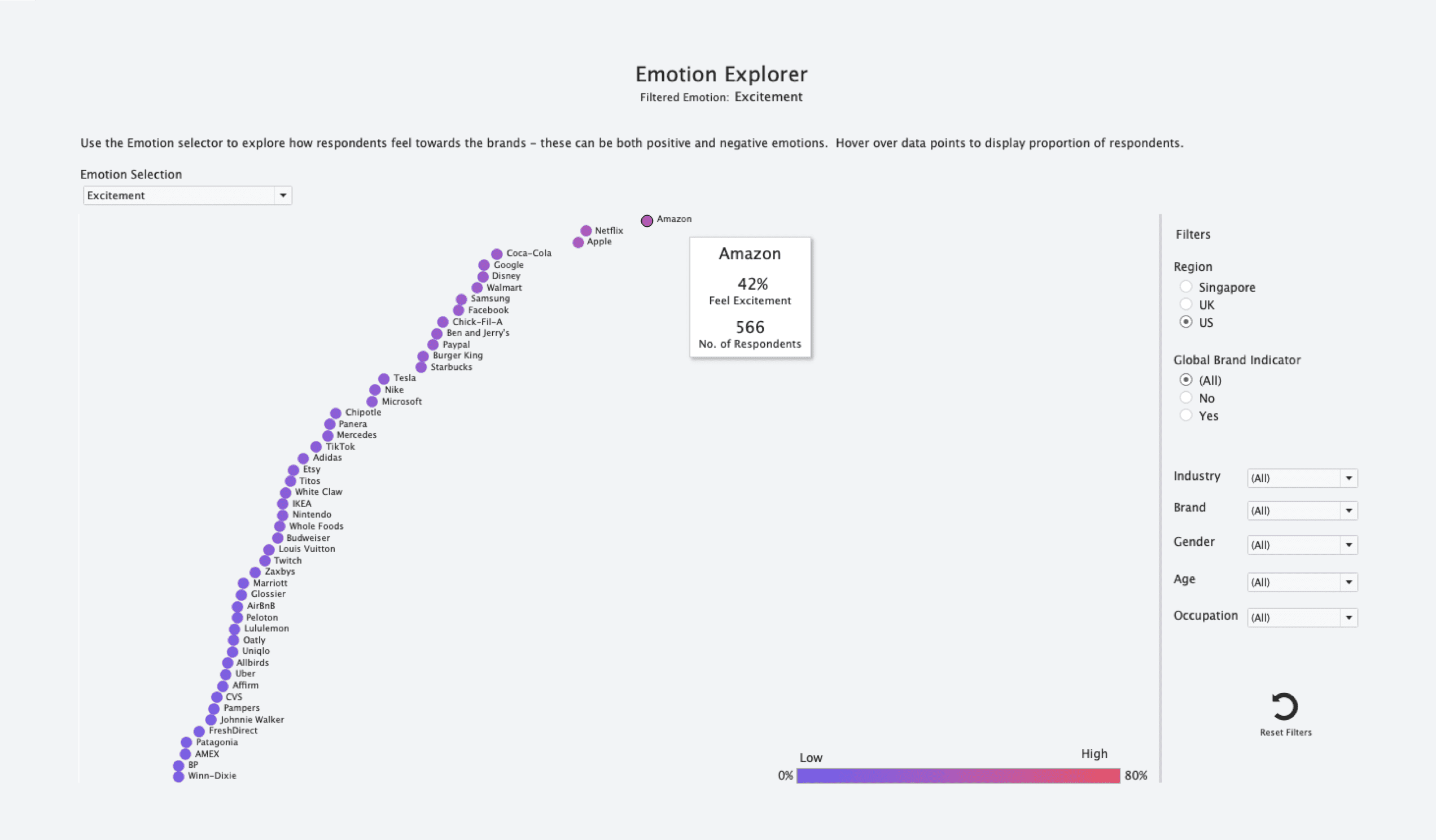Almost every marketer will tell you that emotion matters. Brands are successful when they make us feel. Coca-Cola marketed happiness for years with “Open Happiness.” McDonald’s has been using the line “I’m lovin’ it” since 2003. Volvo makes us feel safe with ad after ad showing the various ways their cars protect us on the road. And Subaru has said for years that “Love is what makes Subaru a Subaru.”
Emotions build brands. So much that the Advertising Research Foundation found that “likeability” is the most predictive measure on whether an ad increases sales. We buy because we feel.
But what if we aren’t really feeling brands anymore?
In our 2021 Participation Brand Index, we asked over 500 people in the US how they felt towards 60 popular brands. These brands ranged anywhere from new FMCG darlings like Oatly, to established technology behemoths like Microsoft. The emotions ranged from positive to negative, including: Love, Excitement, Intrigue, Trust, Indifference, and Dislike. The results were surprising. Across the total age group of 18-65+, no brand garnered any emotion over 50%.
It seems we are indifferent to our indifference.

Glossier, who has the highest Participation Brand Index score at 4.96, only had 12% of people feel excitement and 15% feel love toward the brand. Only 18% of people felt excitement towards Tik Tok – the brand overwhelmingly seen as “hot in popular culture right now.” Adidas ranks highest in the Character pillar for “Cares about its customers” but still received love from only 19% of people. Peloton – the brand with the most fanfare during the pandemic – only 6% of people said they had love for it and 12% of people felt excitement for it. And Apple, the brand that consistently ranks #1 year after year on Interbrand’s Best Global Brands list, had only 30% of people say they feel love towards it.
We know from our own past research with Participation Brand Index that excitement, not love, is the most important emotion in this “modern world of immediacy and interaction.” So what if it’s not there? What if we don’t love OR get excited by brands anymore?
Out of all six emotions, trust had the highest numbers with 50% of respondents saying they feel trust for Amazon; 49% for PayPal, and 45% for Google. This is in comparison to only 37% feeling love for Amazon and 28% for both PayPal and Google.
Trust is widely characterized by honesty and reliability. After a year of increased uncertainty with the pandemic, stability might be more what we are looking to feel with brands than any other emotion right now. The brands that have the highest percentages of trust – Amazon, PayPal, Google – are 3 of the brands that helped people get through this past year. Amazon was a key player in keeping people’s lives running as stores closed and our comfort levels remained shaky when they opened. The one brand we could count on to deliver what we needed when we needed it was Amazon. That certainty during a time of confusion is significant.
PayPal, who came in a very close second, enabled people to continue to exchange money in an increasingly contactless time. Almost every industry had to accelerate their digital offerings during the pandemic and PayPal – and it’s e-commerce portfolio that includes Venmo – kept businesses running. From takeout to haircuts, so many businesses and people relied heavily on digital transactions to retain a sense of normalcy. And PayPal led the way.
One thing to note is that there is a difference between trust and brands that are seen as “transparent and honest in [their] communications.” Amazon got the highest percentage of trust but fell in middle of the pack on character.
PayPal and Google were even lower than Amazon on this. This shows that what a brand does and how it communicates is different. Trust is built on actions, not words. What you do is more important than what you say.

What a brand does and how it communicates is different. Trust is built on actions, not words.
Despite the underwhelming percentage of people saying they feel positive or negative, we see a strong correlation between emotion and performance measures. Love and trust for a brand strongly correlates with the statements that drive action: “would pay more” “think about [it] regularly,” and “would recommend it.” So positive emotion still drives performance – even if it might be harder to elicit those feelings now.
This year’s Participation Brand Index shows that the bar is set higher now post-pandemic. Brands are still seen as shaping culture, making people feel like part of a community, and helping them create memorable moments…but the love and excitement is not there. Emotions are fragile. As we continue to see the power of participation, brands need to become more focused on their actions – asking how you show up in people’s lives; what benefits you offer; what role you play in making life better. The brands that received the most emotion are the ones that are more able to confirm that trust. Your package from Amazon either arrived or it didn’t. You were able to pay for your restaurant curb-side dinner via PayPal or not.
Emotions are stronger when experiences can confirm them.